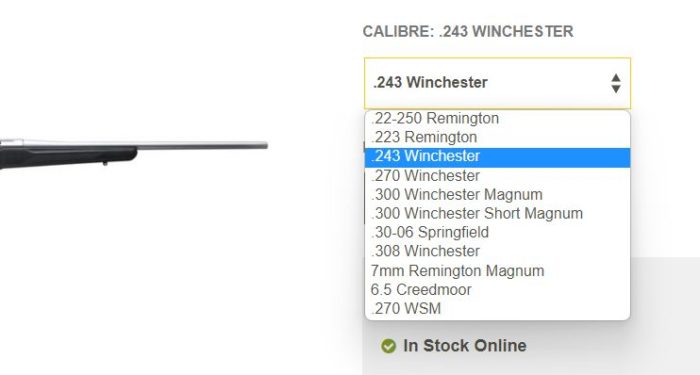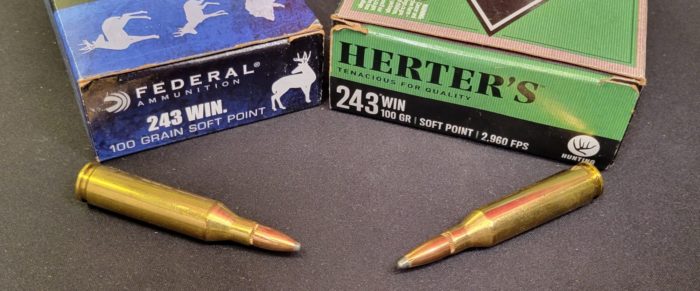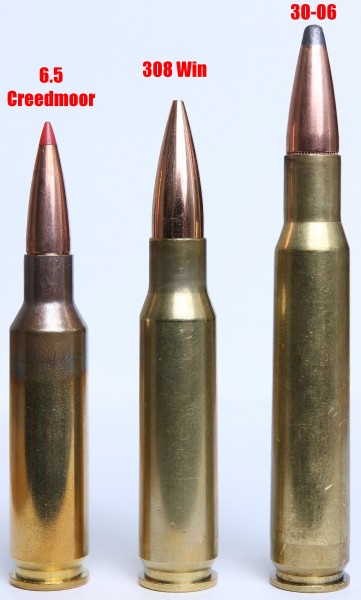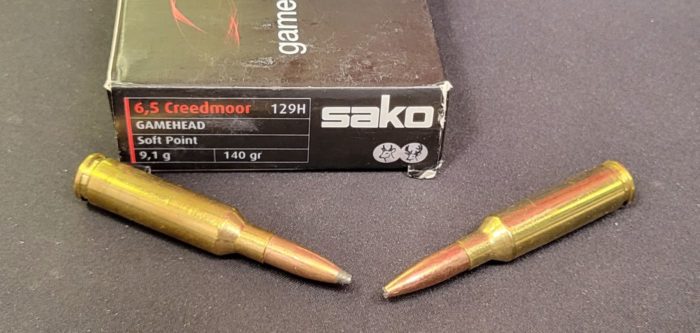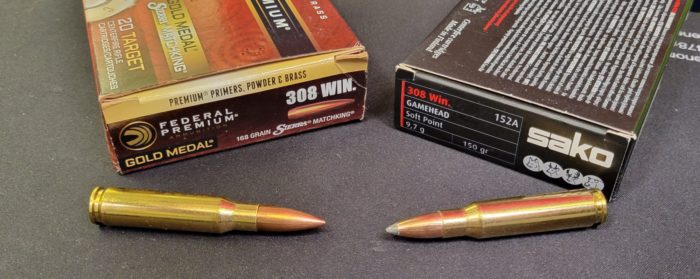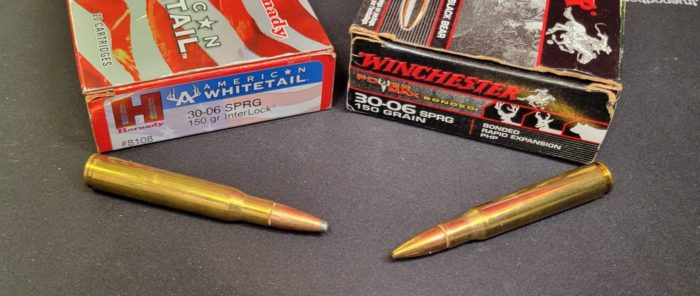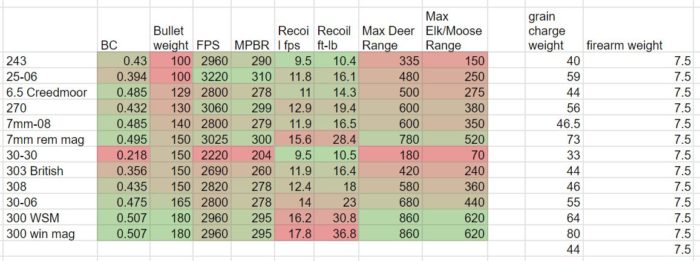Looking at getting a rifle in a different caliber, or looking at getting your first rifle? The array and names of the cartridges can be confusing. Is a 308 bigger than a 30-06 or a 7mm? The makers of these different cartridges sure haven’t made it easy to compare them. Even if you know them, it can be difficult to know which is flatter shooting or harder hitting or harder recoiling. So, I decided to put together an article comparing them.
If I can impress anything on you, it’s this: these cartridges do the exact same thing for 99% of hunters. If you take your deer at the average distance of <100 yards, they’ll all do the exact same thing.
**Updated 2022**: I added 6.5 Creedmoor and removed 270 WSM due to popularity and unpopularity, reworked the recoil chart, reworked the color scale and included the variables so you can calculate your own.
Note 1: Velocity on the box vs real world velocity
Most of the numbers I’m using here are factory box numbers. They like to use long-ish barrels for their quoted muzzle velocities so they’re on the high side. You may experience lower velocities due to using a shorter barrel on your rifle. That may also mean that the drop charts tables on the box are wrong for your rifle too. Hit the range and get real data before going hunting.
Note 2: Copper vs traditional lead bullets
Traditional bullets use a copper blend jacket and lead core. The jacket controls expansion of the bullet so that it creates a wide wound track in the animal. You can use heavier, slower bullets to create longer wound tracks or ligher+faster bullets to create wider, but shorter wound tracks. Using this flexibility, you can hunt bigger game with heavier bullets where you need more penetration, and lighter bullets for smaller game.
Pure copper bullets are interesting because you kind of get to have your cake and eat it too: because copper is lighter than lead, their bullets are longer and have better ballistic coefficients than a comparable lead bullet and copper tends to maintain its weight as it penetrates game animals. So you can go with a lighter bullet and get good ballistic performance but still get the penetration needed for big game. That all said, some copper bullets have very poor expansion at low velocities, so those great aerodynamics may not be as useful as they look. An impact at long range may cause a “pencil” hole in the animal with no expansion of the bullet.
Calibers for Hunting Big Game
I’m using a few different inputs, but really the numbers I’m going to be comparing relate to:
- MPBR: Maximum Point Blank Range. A good measurement to decide how flat a rifle shoots and how far you can still take a deer without raising the crosshairs over where you need to hit.
- Recoil: How much a gun might kick. Valuable to know for new shooters or those who can’t take a lot of recoil.
- Maximum distance the bullet can go and still carry 1000 ft-lbs of energy. Basically how far you could technically hit a deer and reliably take it down.
- Maximum distance the bullet can go and still carry 1500 ft-lbs of energy. Basically how far you could technically hit an elk or moose and reliably take it down.
Keep in mind that there is no free lunch. With increased range and/or energy, you increase recoil. And when you look at the MPBR’s of these cartridges, you’ll quickly realize that the difference in “flatness” is incredibly small. With knowledge of how far you want to take game at, you can use this table to decide which rifle gives you the distance you need while minimizing recoil. One smaller variable I’m not measuring here is barrel erosion. Suffice to say, faster cartridges will burn out a barrel faster than some of the slower ones. If you do a standard amount of hunting, you’ll still get lots of life out of even the fastest standard hunting cartridges.
243 Winchester
The 243 is based on the 308 Winchester, but is necked down to .243 caliber (6mm) bullet. That makes for a much lighter and somewhat faster bullet. Most importantly, it cuts the recoil down considerably. A 243 with 100 grain bullets is the most popular choice for youth hunters and lady hunters who are just getting into the sport. Make no mistake, even with its diminutive recoil, the 243 is devastating to deer in the most common ranges: 50-250 yards. That makes it a practical choice for the majority of deer hunts, and shot for shot, will do the exact same thing that any of these other cartridges will. However, on any bigger animals, the 243 is just not putting out enough oomph to recommend. So no Elk or Moose on the menu. The 243 can be sighted in for an MPBR of 290 yards, which is pretty much the farthest you’ll want to shoot a deer at anyways with this cartridge. Because the 243 is based on the 308, it fits into short actions and therefore can be found in rifles that are slightly lighter than regular length actions.
Just because 243 is recommended for lady and youth shooters, don’t write it off. Even beyond the typical ranges that deer are taken at, the 243 can do it handily.
25-06 Remington
The 25-06 is a bit obscure and I wasn’t quite sure if I should have included it in this comparison. You see, the 25-06 is built for killing deer with a flat shooting, non-magnum charge. Based on the 30-06 case (that’s what the -06 part is supposed to imply), the 25-06 is the second fastest cartridge listed here, and it does it with a small, 100 grain bullet that’s 0.257″ in diameter. That small bullet translates into low recoil, yet a far MPBR of 310 yards, also coming in second. The only thing that worries me about the 25-06 is that hitting a deer at close range would mean speeds well over 3000 fps. A conventional bullet will definitely make more of a mess than necessary at that speed and if it were to impact a hard bone such as the thigh or hip, it may splatter instead of penetrate.
6.5 Creedmoor
My update for 2022 is including a cartridge I’ve used for deer for the last 3 years: 6.5 Creedmoor. It combines tame recoil with really decent long range performance in a short action cartridge that’s (now) easy to find and reasonably priced. It’s a very practical deer cartridge that can take long range shots yet has pretty light recoil: a goldilocks “just right” cartridge for those deer hunters who take some at longer ranges.
Unlike years ago, 6.5 Creedmoor is VERY easy to buy now: lots of choice at the local Cabela’s.
Either 129 or 140 grain bullets of 6.5mm (0.264″) will do practically the same thing. The velocity is sane so most traditional bullets will work just fine. Want to read more about 6.5? Check out my article on 6.5 Creedmoor vs 308.
270 Winchester
Take that case from the 25-06, and imagine it with a slightly wider bullet. From 25 caliber, to .277 and from 100 grain bullets, to 130 grains. That extra bullet weight increases recoil from the low range to the mid-range, reduces speeds, and greatly increases maximum ranges game can be taken at. Now, we could potentially take down deer sized game up to 600 yards away but we’ve done it at an increase to recoil.
While the 270 is a speed king with 130 grain bullets, I prefer using heavier 140 or 150 grain bullets. At close range, the 130’s fragment heavily and leave a mess of lead and jacket material all up in the wound channel.
7mm-08 Remington
Take all the stats from the 270 in killing distance, cut a bit off the recoil and MPBR, and put it in a short action rifle, and you have the 7mm-08. With the popular 140 grain bullet size in 7mm (0.284″) diameter, the 7mm-08 carries its weight plenty far enough and does it with pleasantly little recoil. Seeing how it’s the big brother to the light kicking 243, you’d expect that.
The 7mm-08 is very similar to 6.5 Creedmoor but just hasn’t seen the popularity.
7mm Remington Magnum
Our first magnum, the 7mm Remington Magnum puts a whole lot more gunpowder behind a slightly heavier version of the 7mm-08 bullet. The extra power propels the bullet’s deer killing range out to 780 yards, and the Elk/Moose distance to more than 500. But like I said before, there is no such thing as a free lunch. That extra power and range takes the recoil up to an area that is uncomfortable for most shooters. That introduces the potential of inducing a “flinch” in the shooter from practicing with their hunting rifle: when you start anticipating the sharp kick that’s coming your way. You can combat the recoil by using a heavier rifle or a better buttpad.
30-30 Winchester
By modern standards, the 30-30 is a bit of a joke. Originally marketed in 1895, it’s the only rimmed cartridge I’ve included here. I chose to include it because it still sees use in short range, fast handling lever action rifles and those rifles are perfectly at home in heavy brush or walking along trails. Accuracy and range wise, it’s the light-weight of this group. Note that even in this ancient has-been, you can still get a meaningful MPBR of 204 yards. Plenty of game is shot short of 200 yards, and if you play to this cartridge’s strengths, it’s still fantastic. If you really love lever action rifles and you want to increase your range, you can always check out Hornady’s LeverEvolution ammo that uses a soft, rubbery tip to give their bullets MUCH better range. 30-30 is also often the cheapest hunting ammo available.
303 British ****
Shortly after posting this article, I was reminded by a reader that I had forgotten the quintessential Canadian hunting cartridge and rifle: 303 British. I actually shot my second deer with a 303 from about 100 yards. There are 2 factory loads that Federal has in their ballistics program: a 150 grain loading, and a 180. Surprisingly, the 150 starts with and maintains energy further out than the 180. It likely has a lot to do with the terrible BC on the 180 grain load, but there’s still not a lot of difference between the two. In the 150 grain loading, the 303 British pokes along at 2690 fps and can take a deer at out to 420 yards. That’s way further than you should go in the #1 Mk 3 or #4 Mk1 that are so common in Canada. The generous headspacing, short sight radius on the iron sights, and rear locking lug setup on the SMLE is not optimum for accuracy. In any case, the 303 “smelly” still has plenty of range to take a deer at sane ranges and sporterized versions of the rifles are ~$200 in Canada. If you’re going to buy a new rifle though, for the same recoil you could get a 270 or 6.5 Creedmoor and greatly increase both your MPBR and killing distance.
308 Winchester
The 308 is the standard hunting cartridge today. While it’s got about the same ballistics as the previously most popular 30-06, it does it in a short action and with less recoil. Distance is decent and ammunition is inexpensive. The 308 is also used by many militaries as a sniping round as the (metric) 7.62×51.
I used a 150 grain bullet for my calculations but a 165 grain bullet is also a great compromise between penetration and ballistics.
30-06 Springfield
The 30-06 is the go-to cartridge when you can only get 1 rifle and there are going to be lots of different sized critters on the menu. Decent for deer, bear, elk, moose, and all within reasonable distances. Importantly, the 30-06 does all that without going too far past the average limit of recoil. It’s the last one on the list that’ll be reasonable on recoil. I’ve got an article on 308 vs 30-06 if you’re down to those two.
I used a 165 grain bullet for calculations on the 30-06 because it has a bit more powder capacity than the 308 and can get a bit more speed.
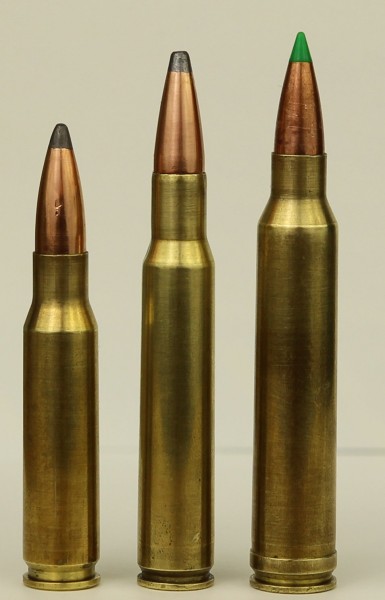
300 Winchester Magnum
This is it, the biggest, baddest round that is offered in standard rifles. Typically loaded up with 180 grain bullets, it’s still hauling enough energy to reliably take out a deer at a mighty 860 yards. It’s also fantastic for the long distances that elk are shot at, offering enough oomph to take them at at just over 600 yards. With an MPBR of 295, it’s still flatter than average, and that’s with a heavy bullet. All these capabilities come at a cost: recoil. The 300 Win mag builds high amounts of recoil. It’s not completely ridiculous, but it’s more than most people like and a flinch can really ruin your accuracy. And you lose 1 round of capacity in the magazine with most rifles compared to standard rounds. I have an article on 308 vs 300 win mag if you want to dive into the details.
300 WSM (Winchester Short Magnum)
Take exactly all the power and recoil from above and make it available in a short action with a more effective burn and less powder required. Potentially more accurate and potentially even fewer rounds for your magazine. A lighter, short action rifle 300 WSM might kick a bit harder than a heavier long action 300 win mag. Don’t forget the premium prices on ammunition. Still, if you wanted to hunt elk and wanted a lighter rifle, the 300 WSM will give you a shorter action and lighter rifle than the 300 win mag will.
Cartridge to watch for: 6.5 PRC
I’ve been seeing 6.5 PRC show up on more new hunting rifles. The 6.5 PRC still fits a short action just like a 6.5 Creedmoor, but it sends bullets about 200 fps faster. Magazines may hold 1 or 2 fewer cartridges since 6.5 PRC is a chonky boi.
Shot Placement is more Important than Technical Ballistics
If you talk to your buddies about what rifle to pick, they might point out one that they’ve seen theirs “kill deer right where they stand”. They’re doing the best with the knowledge they have but on a statistical basis, what they claim doesn’t have a lot of weight. Having a deer drop dead from a shot has everything to do with shot placement, bullet type, and the deer itself. You can of course guarantee a drop with a spine, head, or front shoulder shot, but that has nothing to do with the caliber: a regular heart/lung shot comes with a 50% “drop dead” potential. Think I’m full of it? Check out this study by the South Carolina Department of Natural Resources. Basically, any regular hunting cartridge will do the job well with a safe heart/lung shot. Do your job taking the shot, and your rifle will do its.
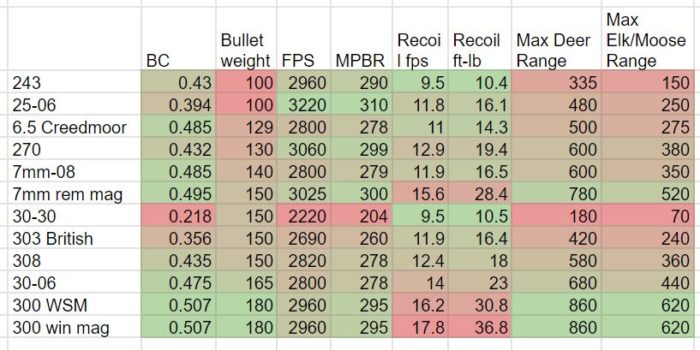
Want to run your own numbers? To generate these charts, I used:
- Federal Premium Ballistics
- Shooters Calculator.com
- For charge weights, I used Hodgdon’s reloading site and approximated charge weight for factory rounds
- For rifle weight, I used 7.5lbs for all.
- For MPBR, I’m using a 6″ target
You should be able to replicate my numbers using Shooters Calculator and the extra table data below:

